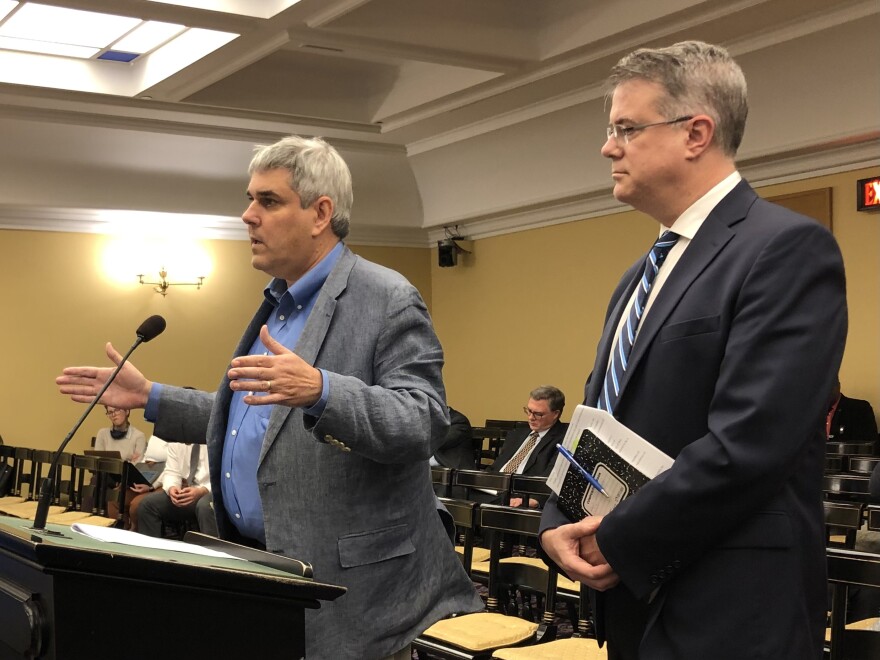The rough drafts of maps for Ohio House and Senate districts presented to the Ohio Redistricting Commission today were developed by independent mapmakers who have been working, under the watch of a live cam, for three days now.
The Ohio Redistricting Commission hired University of Florida Professor Michael McDonald and National Demographics Corporation President Douglas Johnson to work together, on one computer, to draw the maps.

The mapmakers stressed these maps are only working maps. And they said they still have some work to do on Senate maps. But Senate President Matt Huffman (R-Lima) was quick to tell the mapmakers he thinks they should put the addresses of current lawmakers on their draft maps so that can be taken into consideration during the process. Democrats on the commission disagreed, saying it would lead to protecting incumbents. Huffman said the idea was to make sure the elected representatives actually represented the area that elects them.
Sen. Vernon Sykes (D-Akron) recommended the two sides employ the use of an approved mediator. Others on the commission agreed so the mediation was set to begin later tonight, after the meeting.
The mapmakers had some requests of their own. They asked the commission to give clear guidance on what should be their priority as they proceed to draw districts going forward.
What guidance are mapmakers seeking?
The mapmakers raised questions about competitiveness, compactness, proportionality, and symmetry. But the members of the commission disagreed on how to tell the mapmakers to move forward.
After the meeting, Sykes said the members would work with the mediator to come up with answers before the commission's meeting on Sunday. And he said the disagreements between members during the meeting were a sign of democracy in action.
“These are usual issues that are done and completed in the back smoky room and they are being brought out and discussed here in the open and democracy is not easy," Sykes said.
The commission must adopt new House and Senate district maps Monday to satisfy an order by the Ohio Supreme Court. Meanwhile, Secretary of State Frank LaRose (R-Ohio) has already directed local boards of elections to remove state legislative races from ballots.
A federal court is considering a plea by Republican activists to use earlier maps ruled unconstitutional for this election. If the court allows that to happen soon, LaRose said there is a possibility legislative and Central Committee races could be on a supplemental ballot. If that's not possible, the primary would have to be moved past May 3 or there could be two primaries. Elections leaders say holding two primaries would cost millions of dollars and cause confusion for voters and boards of elections.
Copyright 2022 The Statehouse News Bureau. To see more, visit The Statehouse News Bureau. 9(MDAxMzY2MjQ0MDEyMzcyMDQ5MzBhZWU5NA001))



